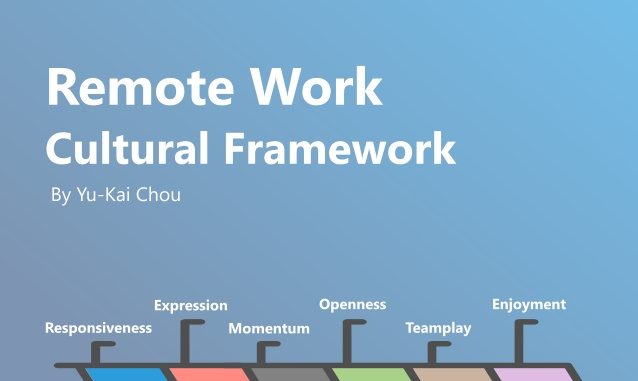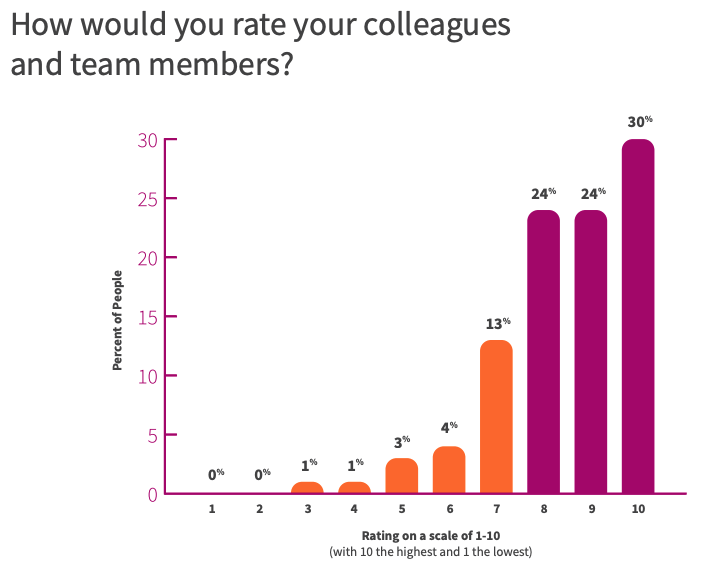
Turbulent times for engagement
The world is going through turbulent times. We are all busy adjusting to unprecedented realities. Companies worldwide have had to readjust to at least one aspect of this ‘new ‘normal’: many of their employees are working remote.
The new situation presents lots of opportunities but unfortunately also many complications. And most companies are not well set up to profit from the positive potential, nor deal with the negative fall-out in the new reality.
Many companies struggle to keep people engaged. This was already the case in ‘normal’ office settings, and is even more important when people do not work in the vicinity of colleagues.
The new business normal: working REMOTE
For some people, working from home is a gift. A recent study found that 99% of all employees would love to work remotely at least some of the time.
However, at the same time, colleagues are hugely important for workers, as the below image shows. More than half of the respondents of this survey rated their colleagues as a 9 or a even a 10 (on a scale of 1 to 10).

For many it is the first time that they are forced to work in a remote work setting. Not having colleagues around is likely to damage employee happiness and motivation.
In turn, not having managers around may damage efficiency and effectiveness. And for these managers, not having their staff physically close, will also be a daunting prospect.
So once the excitement of remote work set up wears off after a few weeks, the question really is:
How do you prevent…
- Degenerating work culture
- Distraction and loss of accountability
- Struggling team morale and emotional commitment
- Reduced team bonding and trust
- Lack of citizenship activities
- Isolation and psychological illnesses
The REMOTE Framework
Yu-kai Chou has recently developed the new and insightful REMOTE framework to highlight how to create engagement for remote workers . It provides a guide to get people working remotely much more productively, strengthen team bonds and culture.
The Framework comprises 6 steps needed to make remote work, work for your company. Some steps are easy to take as they involve putting the right technology in place. Others are more difficult as they involve a degree of cultural and leadership change. But, all of these steps are doable. I know they are, from my own experience in taking these steps.
In my own company (The Octalysis Group) we have built up many years of experience in how to set up remote working. We all work remotely and have implemented a structure that works well. REMOTE is the result of many years of lessons learned. Follow it and your company will be set up to flourish in the new remote work reality, just as we have!
This article originally appeared on the Octalysis Group’s site, as the first article in The Ultimate Guide to REMOTE work series.
- THE REMOTE FRAMEWORK: Guide to Remote Working - 20th June 2020





Could this be adapted to help students to learn remotely? If so what would that look like?
I think it definitely could, and in some ways, I think it is easier to think through some of the parts with reference to school than it would be to think through how it might work for adults working on projects. The nature of school work is that the finite ‘chunks’ of work are quite small (and have visible deliverables) compared to ‘adult’ work. So I can see, for example, that creating and gamifying activities would be easier because as a teacher you are much more in control of what activities the learners are doing in a way which in an adult work setting would be micro-management.
In a teaching setting the small attainable activities are literally what you are doing with the remote platform, whereas in a work setting you might have to create these to sit alongside the rest of the work.
My suggestion would be to go and take a look at the Octalysis Group’s site, and get some inspiration from the great resources and blog posts there. Link to the complete REMOTE work series is in the author bio